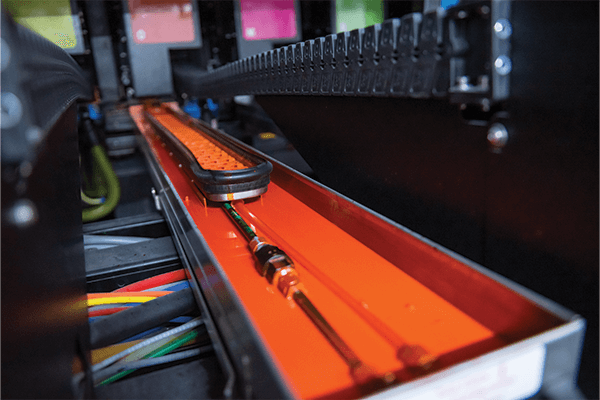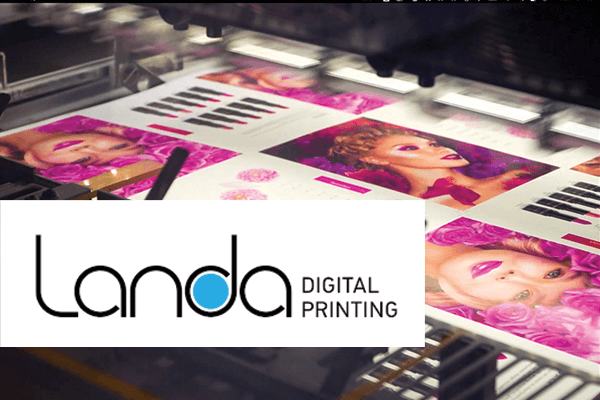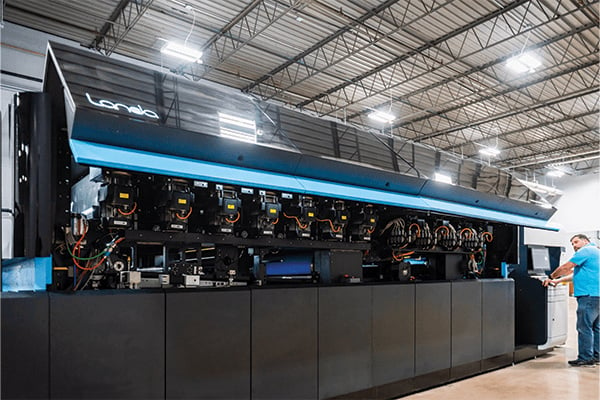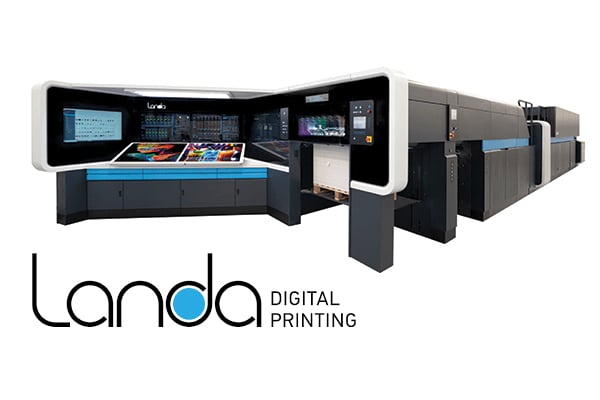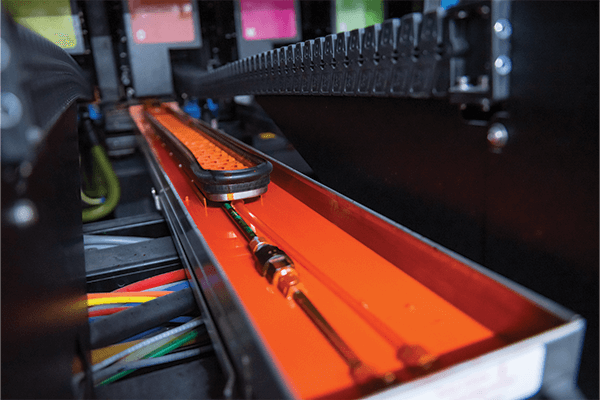 Digital presses have long been heralded for their ability to help brands meet sustainability initiatives in print. The ability to reduce waste by printing exact quantities and using less ink to create the same quality as offset are important value propositions for creating sustainable print. The continued evolution of digital press technology has led to the development of Nanographic Printing®, a revolutionary print platform that has opened up a world of possibilities for brands to leverage high-quality digital print that’s even more eco-friendly.
Digital presses have long been heralded for their ability to help brands meet sustainability initiatives in print. The ability to reduce waste by printing exact quantities and using less ink to create the same quality as offset are important value propositions for creating sustainable print. The continued evolution of digital press technology has led to the development of Nanographic Printing®, a revolutionary print platform that has opened up a world of possibilities for brands to leverage high-quality digital print that’s even more eco-friendly.
But even with the growth of nanographic printing, many marketers still don’t quite understand how this kind of digital press works, or how nanographic printing can — in the hands of a strategic print partner – help brands increase their sustainability in print.
Here, we’ll briefly define what nanographic printing is and how it works, and why this revolutionary approach to the digital press format can help you increase the sustainability of your print materials without sacrificing creativity and quality.
What is nanographic printing and how does it work?
Nanographic printing — also referred to as nanography — is a digital print technology developed by Landa Digital Printing. Designed using the principles of nanotechnology, nanographic printing uses ultra-small particles of ink to consistently produce extremely round dots with super-sharp edges, high optical uniformity, and consistent density.
During printing, ultra-small particles of wet ink are jetted onto a conveyor blanket. The ink droplets are then dried on that blanket, and the dry image is then transferred to the paper. Nanographic printing uses its own specially formulated ink called NanoInk®, which enables precise, efficient low ink lay-down. Once on the paper, NanoInk is just .5 microns thick, less than half the thickness of offset ink images.
Aside from print consistency, precision, and stunning quality, nanographic printing is also defined by the ability to print on any off-the-shelf substrate, whether it's coated or uncoated, glossy or matte, without the need for any pretreatment.
How does nanographic printing help create more sustainable print?
Nanographic printing helps brands leverage more sustainable print in a number of ways, some of which provide additional advantages or benefits that can help you unlock a greater degree of flexibility, versatility, and creativity with your print materials.
Much like digital presses, nanographic presses do not use large, prefabricated plates that are required for offset printing. These plates often require strenuous cleaning and reconditioning processes after use, and these processes call for the use of harsh chemicals or solvents that can be damaging to the environment. Nanographic print eliminates the need for these plates and any associated cleaning processes, and nanographic presses allow brands to print short runs in the exact quantities required to help reduce the use of resources like water, ink, and paper.
Speaking of ink, NanoInk colorants are also supplied as concentrates and are mixed with water onsite. This avoids the unnecessary shipping of water, which helps decrease your carbon footprint and reduce the impact on our planet.
Another big concern for many brands with sustainable print is conserving paper, or at least creating print materials using recycled paper. With nanographic printing, you can print on any off-the-shelf substrate, including recycled paper and paperboard. The ability to choose recycled paper that uses post-consumer waste (PCW) helps reduce stress on our nation’s landfills, and it also makes your print materials less reliant on virgin paper sources.
Aside from enhancing your sustainability efforts, the ability to print on any substrate — especially those containing PCW material — has an added benefit. Printing on any off-the-shelf recycled substrates liberates you from supply chain disruptions of product availability, and it also gives you the ability to be more selective in terms of the print media you specify.
This gives you the freedom to select a paper product that more closely aligns with your company’s sustainability goals and your customers’ needs.
As an innovative, strategic print partner, we’ve embraced nanographic print technology by incorporating the S10P Nanographic Printing Press to our diverse fleet of offset and digital presses. Not only does this help us provide brands with sustainable print capabilities, it also gives us the ability to provide high-quality materials in an efficient, cost-effective manner that demonstrates how print can create meaningful ROI.
Learn more about Quantum’s commercial print services and how we are achieving the next level of speed, quality, personalization, and sustainability.

